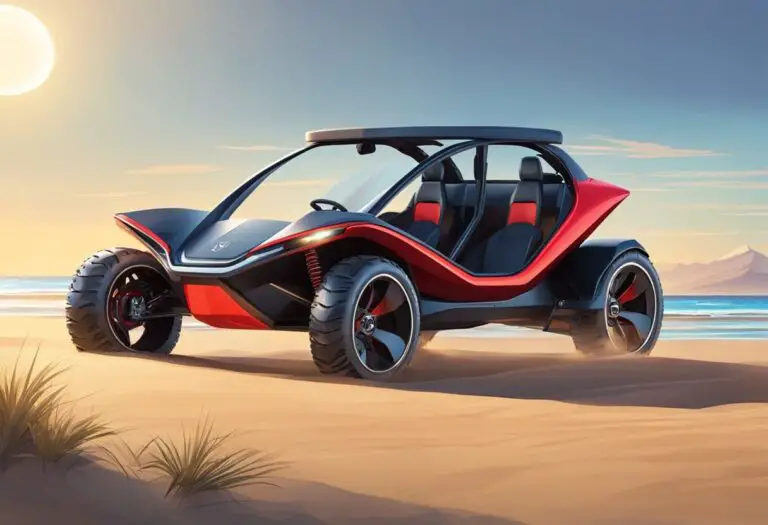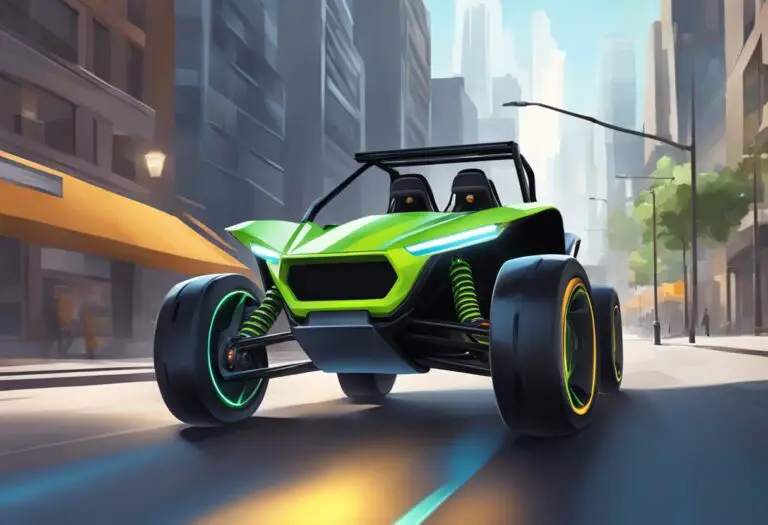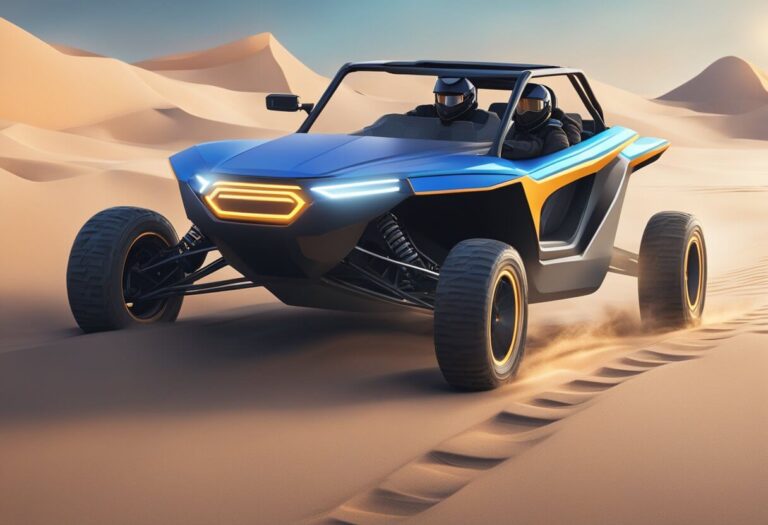VW Electric Dune Buggy: The Future of Off-Roading

The VW Electric Dune Buggy is a modern take on the classic dune buggies that were popular in the 1960s and 1970s. The concept vehicle was first introduced at the 2019 Geneva Motor Show and has since garnered attention for its unique design and all-electric powertrain.
The Electric Dune Buggy is based on Volkswagen’s modular electric drive matrix (MEB) platform and pays homage to early dune buggies from the 1960s and 1970s. It features a two-seater open-top design with a minimalist interior and a range of up to 155 miles on a single charge.
The VW Electric Dune Buggy is a fun and funky EV that appeals to those who appreciate retro styling and eco-friendly technology. While it is currently a concept vehicle, there is speculation that it may eventually go into production. If it does, it could be a game-changer in the EV market and a hit among dune buggy enthusiasts.
Key Takeaways
- The VW Electric Dune Buggy is a modern take on the classic dune buggies of the past.
- It features an all-electric powertrain and a range of up to 155 miles on a single charge.
- While currently a concept vehicle, there is speculation that it may eventually go into production.
History of the VW Electric Dune Buggy
Concept Evolution
The Volkswagen Electric Dune Buggy is a modern reinterpretation of the classic American dune buggies that were first created in the 1960s. The concept vehicle is based on the modular electric drive matrix (MEB) platform, which is capable of powering a wide range of vehicles.
Volkswagen first teased the electric dune buggy in a video released by the automaker in January 2019. The video showcased the vehicle’s off-road capabilities and its unique design. The electric dune buggy was designed to pay homage to early Dune Buggies from the 1960s and 1970s.
Official Announcements
In March 2019, Volkswagen officially unveiled the first fully electric version of the new dune buggy. The electric dune buggy is a two-seater vehicle that is powered by a 62 kWh battery pack and a 201 horsepower electric motor. The vehicle is capable of reaching a top speed of 99 miles per hour and can accelerate from 0 to 60 miles per hour in just 7.2 seconds.
The electric dune buggy features a unique open-air design with no roof or doors. The vehicle’s interior is designed to be water-resistant, making it suitable for off-road use. The vehicle’s modular design allows for easy customization and modification, making it a versatile platform for future electric vehicles.
Design and Features
Exterior Styling
The Volkswagen Electric Dune Buggy is a two-seater vehicle that pays homage to the classic California dune buggies of the 60s and 70s. It has a sleek and modern design that is both stylish and functional. The body of the vehicle is made from a mix of aluminum and high-strength steel, making it lightweight and durable. The buggy features an open-top design with a roll cage for added safety. The exterior also includes LED headlights and taillights, as well as fog lights for improved visibility.
Interior Layout
The interior of the Volkswagen Electric Dune Buggy is designed to be simple and functional. The seats are made from a durable and easy-to-clean material, making them ideal for off-road adventures. The dashboard features a digital display that provides information on the vehicle’s speed, battery life, and other important metrics. The buggy also includes a waterproof storage compartment for storing gear and other essentials.
Innovative Technologies
The Volkswagen Electric Dune Buggy is powered by a rear-mounted electric motor that produces an estimated 201 horsepower. The motor is fed by a 62-kWh lithium-ion battery pack that is located between the wheels. This innovative design provides the buggy with a low center of gravity, which improves handling and stability. The battery pack can be charged using a standard household outlet or a Level 2 charger, and it provides an estimated range of 155 miles on a single charge.
Performance and Specifications

Electric Powertrain
The Volkswagen Electric Dune Buggy is powered by a 62 kWh battery pack and a 201-horsepower electric motor. It is built on VW’s modular electric drive matrix (MEB) platform, which is designed to be flexible, allowing it to fit a variety of vehicles. The electric powertrain provides instant torque and acceleration, allowing the Dune Buggy to go from 0 to 60 mph in just 7.2 seconds.
Battery and Range
The Dune Buggy’s 62 kWh battery pack provides an estimated range of up to 155 miles on a single charge. This range may vary depending on driving conditions, terrain, and other factors. The battery can be charged using a standard Level 1 or Level 2 charger, or with a DC fast charger for even faster charging times.
Charging Options
The Dune Buggy comes with a standard Level 1 charger that can be plugged into a standard 120-volt household outlet. It can also be charged using a Level 2 charger, which requires a 240-volt outlet and provides faster charging times. For even faster charging, the Dune Buggy can be charged using a DC fast charger, which can charge the battery up to 80% in just 30 minutes.
Production and Manufacturing
Facilities and Locations
Volkswagen has announced that the electric dune buggy will be produced in the company’s Osnabrück factory in Germany. The factory has been producing cars since the 1960s and has a long history of producing convertibles and sports cars. The Osnabrück factory is equipped with state-of-the-art production facilities and is staffed by highly skilled workers.
Sustainability Efforts
Volkswagen is committed to reducing its environmental impact and has implemented several sustainability initiatives in its production processes. The company has set a goal to reduce its carbon footprint by 30% by 2025. To achieve this goal, Volkswagen has implemented several measures, including the use of renewable energy sources and the reduction of waste and emissions.
The electric dune buggy will be produced using Volkswagen’s modular electric drive matrix (MEB) platform, which is designed to be highly efficient and sustainable. The MEB platform is based on a flexible modular system that allows for the production of a wide range of electric vehicles using the same basic components. This approach reduces waste and increases efficiency, making the production process more sustainable.
In addition to its production processes, Volkswagen has also implemented several sustainability initiatives in its supply chain. The company is working with suppliers to reduce their environmental impact and has set a goal to source 50% of its raw materials sustainably by 2025. This includes the use of recycled materials and the implementation of responsible sourcing practices.
Market and Audience
Target Demographics
The Volkswagen electric dune buggy is expected to appeal to a wide range of consumers who are looking for an eco-friendly and stylish off-road vehicle. The target audience for this vehicle is likely to include adventure seekers, outdoor enthusiasts, and those who are interested in sustainable transportation options.
The electric dune buggy is likely to appeal to those who are interested in exploring the great outdoors while minimizing their carbon footprint. The vehicle’s all-electric powertrain and eco-friendly design make it an attractive option for environmentally conscious consumers who want to enjoy off-road adventures without harming the environment.
Competitor Analysis
While there are currently no direct competitors to the Volkswagen electric dune buggy, there are several off-road vehicles on the market that may appeal to similar demographics. These include:
- Jeep Wrangler: The Jeep Wrangler is a popular off-road vehicle that is known for its rugged design and off-road capabilities. While it is not an electric vehicle, it is a popular choice for those who enjoy off-road adventures.
- Polaris RZR: The Polaris RZR is a high-performance off-road vehicle that is designed for extreme off-road adventures. While it is not an electric vehicle, it is a popular choice for those who are looking for a high-performance off-road vehicle.
- Can-Am Maverick X3: The Can-Am Maverick X3 is a high-performance off-road vehicle that is designed for extreme off-road adventures. While it is not an electric vehicle, it is a popular choice for those who are looking for a high-performance off-road vehicle.
Overall, the Volkswagen electric dune buggy is likely to appeal to a wide range of consumers who are looking for an eco-friendly and stylish off-road vehicle. While there are several competitors on the market, the electric dune buggy’s unique design and eco-friendly powertrain set it apart from the competition.
Pricing and Availability
The Volkswagen electric dune buggy is expected to be available for purchase in 2024. The company has not yet announced an official release date, but it has been reported that the vehicle will be priced at around $41,160 to $54,600. This makes it a relatively affordable option for those seeking a fun and eco-friendly off-road vehicle.
It is important to note that the aforementioned price range is based on speculation and may be subject to change. Volkswagen has not yet released official pricing information for the electric dune buggy.
However, it is expected that the vehicle will be available for purchase at select Volkswagen dealerships and online retailers. Interested buyers can also sign up for updates on the Volkswagen website to stay informed about the vehicle’s availability and pricing.
Volkswagen electric dune buggy offers fun, eco-friendly off-road driving. Affordable price, wide availability make it appealing choice for off-road enthusiasts and environmentally conscious buyers.
Customer Reviews and Reception
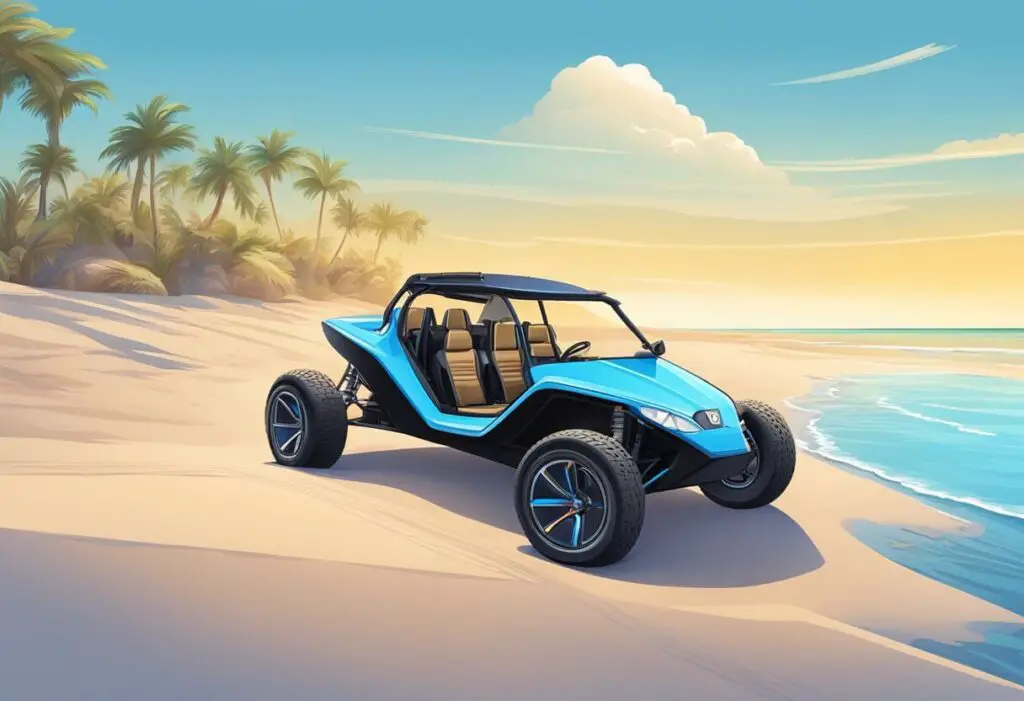
The Volkswagen electric dune buggy has received mixed reviews from customers and critics alike. While some appreciate its retro design and eco-friendly electric motor, others find it lacking in practicality and performance.
One of the main selling points of the electric dune buggy is its unique design, which pays homage to classic dune buggies of the 1960s and 70s. Customers who appreciate the nostalgia factor have praised the car’s looks, with some even calling it “super cool” and “fun to drive.”
However, others have criticized the electric dune buggy for its limited range and lack of power. With an estimated range of 155 miles, the car may not be suitable for long road trips or extended off-road adventures. Additionally, some customers have reported that the car’s top speed of 62 miles per hour is underwhelming compared to other electric vehicles on the market.
Despite these criticisms, the electric dune buggy has garnered attention for its innovative use of electric technology and commitment to sustainability. With a 62-kWh lithium-ion battery pack and rear-mounted electric motor, the car produces zero emissions and offers a quieter, smoother ride than traditional gas-powered dune buggies.
Overall, the Volkswagen electric dune buggy is a niche vehicle that appeals to a specific audience. While it may not be the most practical or powerful car on the market, it offers a unique driving experience and a glimpse into the future of electric off-road vehicles.
Future Developments and Concepts
Volkswagen’s electric dune buggy is a concept vehicle, which means it is not yet available for purchase. However, the company has stated that it plans to use the modular electric drive matrix (MEB) platform that the buggy is based on to create other electric vehicles in the future.
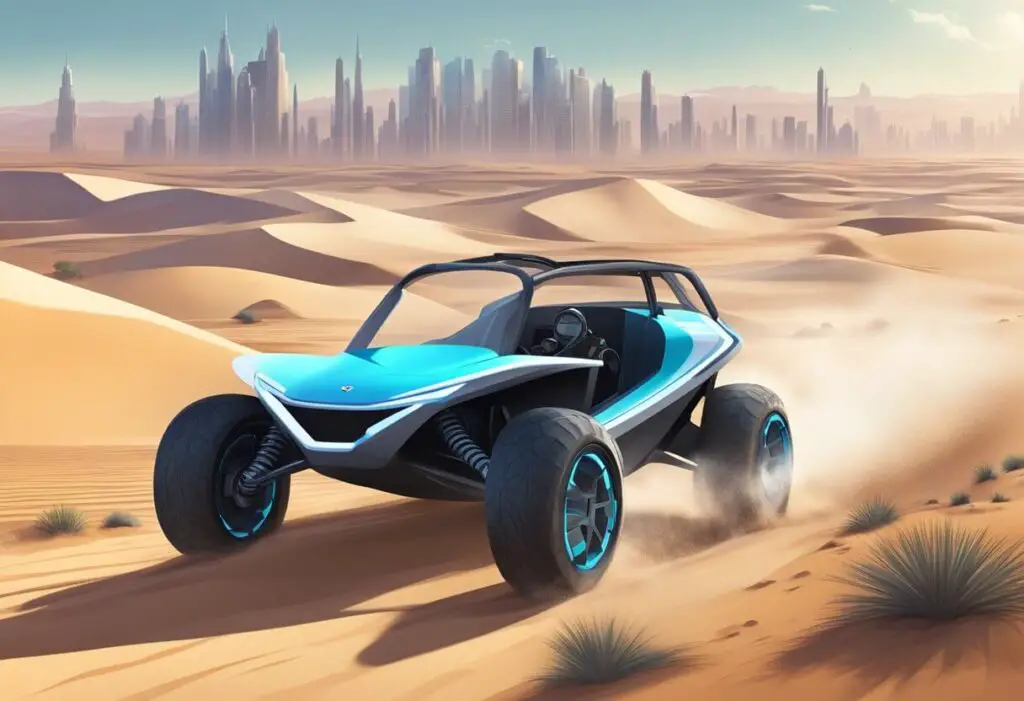
The MEB platform is designed to be flexible, allowing it to be used for a wide variety of vehicle types and sizes. This means that Volkswagen could potentially use it to create other off-road vehicles, such as ATVs or side-by-sides, as well as more traditional cars and SUVs.
In addition to the MEB platform, Volkswagen has also been working on other electric vehicle technologies. For example, the company recently announced that it is developing a new type of battery that it claims will have significantly higher energy density than current lithium-ion batteries. This could potentially lead to electric vehicles with longer ranges and shorter charging times.
So, Volkswagen’s electric dune buggy is just one example of the company’s commitment to electric vehicle technology. As the company continues to develop new platforms and technologies, it is likely that we will see more innovative and exciting electric vehicles from Volkswagen in the future.

